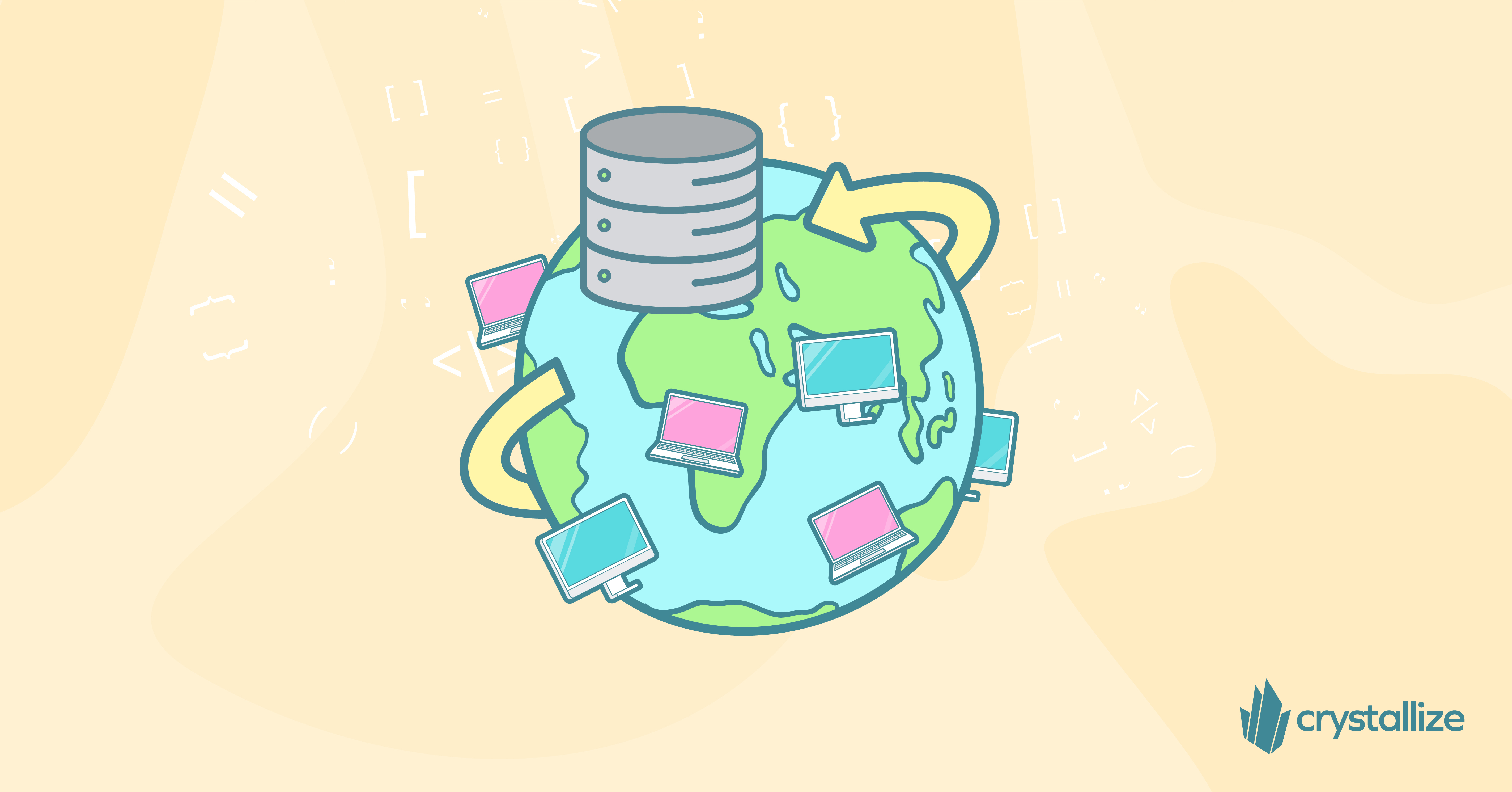Leveraging Global CDN for Faster eCommerce Delivery
Using a global CDN enhances eCommerce delivery speed by distributing content across geographically dispersed servers, reducing latency, and improving load times for users worldwide.

Let's Get Started
Online shopping stores have taken off in recent years. As of 2024, there are 2.64 billion online buyers worldwide, a big chunk of the world's population. The success of any e-commerce business relies heavily on more than great products and competitive prices.
Users expect an online store to be performant and provide a smooth experience. After all, that is one way to convert window shoppers and browsers into buyers (more on that in our CRO strategies post).
This is where Global Content Delivery Networks (CDNs) come in. A CDN is a powerful tool that has had a big impact on how online retailers deliver content to their customers, ensuring lightning-fast loading times and a seamless shopping experience across the globe.
Let’s explain this with an example.
An entrepreneur runs a jewelry store. The web designs are amazing, but she has noticed high bounce rates and a lot of abandoned carts. The culprit? Product images are loading too slowly, and checkout is laggy for international customers. This is not a unique story; many eCommerce stores face this problem.
We’ll discuss how CDNs can be properly leveraged to make visiting that jewelry store from the example (and your online store) a great experience.
What Is a CDN?
Before diving further, let’s break down what a CDN is. A Content Delivery Network is a geographically distributed group of servers that work together to deliver website content quickly. Instead of serving all the traffic from a single origin server, a CDN caches content on servers worldwide and delivers it to your users from a location closest to them. This results in reduced latency, which leads to an improvement in loading times.
At Crystallize, performance is a priority, so of course, we use CDNs. All media uploaded to Crystallize is automatically transcoded and available via our global content delivery network (CDN).
Now that we know what a CDN is, it is time to see its importance for eCommerce.
Why Use CDN?
Speed
In the world of online shopping, every second counts. Studies show that a mere 100-millisecond delay in load time can hurt conversion rates by 7%. CDNs can dramatically reduce load times, keeping potential customers engaged and reducing cart abandonment.
Global Reach
As your eCommerce business expands internationally, CDNs ensure that customers experience the same fast, seamless browsing experience regardless of location, whether in the bustling streets of New York or a quiet suburb in Skien.
Reliability and Availability
CDNs are reliable. If one server fails, traffic is automatically rerouted to another. This means your site stays up and running even during traffic spikes or other server issues.
SEO
Search engines like Google factor in page speed when ranking websites. Faster load times, courtesy of CDNs, can boost your search engine rankings, driving more organic traffic to your store.
Cost
But is it worth paying for? Well, there is undoubtedly an upfront cost to implementing a CDN. However, the long-term benefits often outweigh the investment. Reduced server load, bandwidth savings, and improved conversion rates can lead to significant cost savings over time.
All these points are good, but as a user, it makes decision-making easier when you can read real-life case studies, so here is a list of case studies of eCommerce stores that have benefited from using a CDN:
How Global CDNs Work?
Alright, so we’ve covered the importance of CDNs. Now, it's time to delve into how these work globally!
A global CDN operates on a simple principle: bring the content closer to the user. Here's a step-by-step breakdown of that work:
- Content Replication. The first step is content replication. When you set up a CDN, it creates copies of your website's static content (images, CSS files, JavaScript, etc.) and stores them on multiple servers worldwide. These servers are strategically located at what are called Points of Presence (PoPs).
- User Request. Next, when users visit your online store, their browser requests the website content.
- CDN Routing. Instead of going directly to your origin server, this request goes to the CDN, which determines the user's geographic location.
- Server Selection. Great. The CDN has determined the user’s geographic location, so it's time to select the most optimal server. The CDNs routing system does this, selecting the PoP closest to the user that can fulfill the request most efficiently. This decision is based on proximity, server capacity, and content availability.
- Content Delivery. The selected CDN server delivers the cached content to the user's browser. If the requested content isn't available on that server, the CDN retrieves it from the origin server, caches it for future use, and then delivers it to the user.
- Dynamic Content Handling. What if the content is not static? There is a solution for that as well. For dynamic content that can't be cached (like personalized shopping carts), the request is routed to your origin server, but even this process can be optimized by the CDN. Additionally, many CDNs now offer edge computing capabilities, allowing for some dynamic content processing at the edge that is closer to the user. This further reduces latency and improves performance for the dynamic elements on your eCommerce site.
Let’s revisit our example at the beginning of our post, the jewelry store. Before implementing the CDN, all the product images were served from Melbourne. So, when a customer from the US wanted to view the product, the image data had to travel a long way around the world, resulting in slow load times.
The website now has a global CDN implemented. The request from the customer in the US is now routed to a local PoP in San Francisco. Meanwhile, a customer from London receives the same image just as quickly from a PoP somewhere in the UK.
As you can tell, this distributed approach not only speeds up content delivery but also reduces the load on the store’s origin server, allowing it to handle other critical tasks more efficiently.
💎Shift your BUSINESS perspective…
… to headless architecture with Crystallize and reap the performance, SEO, and CTR benefits that come along with it.
START building for FREE, or schedule a personalized 1-on-1 demo, and let us show you how Crystallize can help your business grow.
